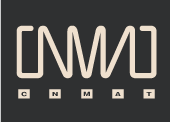Taka Kigawa
CNMAT users group presents permutations040915: Taka Kigawa
Contemporary pianist phenom Taka Kigawa returns to CNMAT for the final West Coast Permutations event of the concert season. Known for his daring programming and exquisite interpretations (most recently exemplified in his multiple performances of Pierre Boulez’s complete works for solo piano), Kigawa will present Marco Stroppa’s Traiettoria, a rarely performed, monumental evening length work for solo piano and electronics. Electronics performed by the Bay Area’s, Rafael Valle.
About the Musician:
Critically acclaimed pianist TAKA KIGAWA has earned outstanding international recognition as a recitalist, soloist, and chamber music artist since winning First Prize in the prestigious 1990 Japan Music Foundation Piano Competition in Tokyo, and the Diploma Prize at the 1998 Concurs Internacional Maria Canals De Barcelona in Spain, with such accolades from The New York Times as “Phenomenon. There’s no denying that he is something special,” “The extraordinary pianist.” and from The New Yorker “Unbelievably challenging program. Kigawa is an artist of stature.” and from La Nación (Buenos Aires) “Taka Kigawa is a stupendous virtuoso.” His New York City recital in 2010 was chosen as one of the best concerts of the year by The New York Times. His New York City recital in August 2011 was picked as one of the most notable concerts in the 2011-2012 season by Musical America. Also his Buenos Aires recital in April 2014 was chosen as one of the best concerts of the year by Argentina’s leading paper, La Nación.
He has performed extensively as a recitalist and soloist in New York, Washington DC, Boston, Cleveland, Paris, Milan and Barcelona, with appearances in Weill Recital Hall at Carnegie Hall, Alice Tully Hall, Kosciuszko Foundation, Severance Hall in Cleveland, Cité de la Musique, and Salle Gaveau in Paris, Plau de la Música Catalana in Barcelona, and Teatro Colón in Buenos Aires. He frequently tours in his native Japan, appearing in Tokyo, Osaka, Nagano and Kyoto, both as a recitalist and a soloist with orchestra and in chamber music groups. He has performed with such distinguished institution as The Cleveland Orchestra. He has been a featured artist on many television and radio networks throughout the U.S., Europe and Asia.
His repertoire is extremely large and varied, ranging from the baroque to avant-garde compositions of today. He has collaborated closely with such renowned musicians as Pierre Boulez, Myung-Whun Chung and Jonathan Nott. Also he premiered the last solo piano piece of late Yusef Lateef, the jazz legend, in New York City in 2013.
Mr. Kigawa grew up in Nagano, Japan, where he began piano studies at the age of three, winning his first competition at the age of seven. He received his Bachelor of Arts degree from Shinsyu University, and his Master of Arts degree from Tokyo Gakugei (Liberal Arts) University, graduating with honors in Piano Performance. During both his undergraduate and graduate years, he also studied composition and conducting, receiving high honors in both disciplines. He furthered his studies in the United States at The Juilliard School in New York, where he earned his Master of Music degree. Mr. Kigawa currently lives in New York City, U.S.A. For more information, visit: www.takakigawa.com
About the Music:
Traiettoria (Trajectory) for piano and computer-generated sounds is a cycle of three parts Traiettoria ... deviata, Dialoghi, Contrasti (Trajectory ... deflected, Dialogues, Contrasts) composed between 1982 and 1984 and lasting about 45 '.
Traiettoria can be considered as a concerto for piano and orchestra in which synthetic sounds replace the orchestra. In this work, the relationship between synthetic sounds and concrete sounds of the piano is sometimes studied so that they merge into a single image and sensation. Inharmonic timbres and harmony, in other words, "illusion" and reality, often tend to merge and transform one into the other.
The layout of the piano and the amplification device has been studied very carefully. The synthetic sounds come either from a loudspeaker placed under the piano and that interferes with the soundboard and strings or several speakers placed around the audience. Depending on the chosen solution the volume is reduced or identifies the public from all sides in a constant pulsing throughout the room. For reasons of balance the piano is also amplified.
Disseminating Traiettoria at the concert serves to shape the synthetic sound following the score and the acoustic characteristics of the room. It should be provided by a musician whose importance is equal to that of the pianist.

